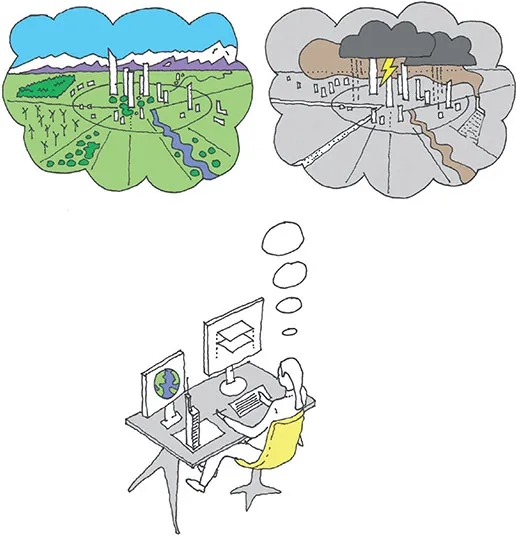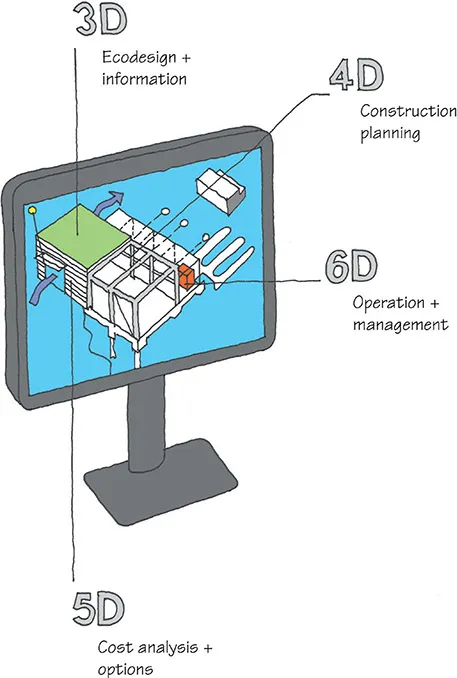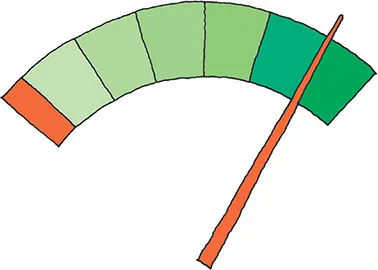
- 224 pages
- English
- ePUB (mobile friendly)
- Available on iOS & Android
eBook - ePub
101 Rules of Thumb for Sustainable Buildings and Cities
About this book
People across the world are becoming more aware of the need for the buildings and cities they live and work in to be sustainable, but the issue of how to be sustainable can seem a confusing and complex one.
These rules of thumb provide universal guidelines for the sustainable design of both buildings and the urban realm. It's a global primer and textbook for anyone interested in understanding sustainability in the built environment, an ideal starting point for students as well as an aide memoir for more experienced readers and practitioners interested in this field.
Frequently asked questions
Yes, you can cancel anytime from the Subscription tab in your account settings on the Perlego website. Your subscription will stay active until the end of your current billing period. Learn how to cancel your subscription.
No, books cannot be downloaded as external files, such as PDFs, for use outside of Perlego. However, you can download books within the Perlego app for offline reading on mobile or tablet. Learn more here.
Perlego offers two plans: Essential and Complete
- Essential is ideal for learners and professionals who enjoy exploring a wide range of subjects. Access the Essential Library with 800,000+ trusted titles and best-sellers across business, personal growth, and the humanities. Includes unlimited reading time and Standard Read Aloud voice.
- Complete: Perfect for advanced learners and researchers needing full, unrestricted access. Unlock 1.4M+ books across hundreds of subjects, including academic and specialized titles. The Complete Plan also includes advanced features like Premium Read Aloud and Research Assistant.
We are an online textbook subscription service, where you can get access to an entire online library for less than the price of a single book per month. With over 1 million books across 1000+ topics, we’ve got you covered! Learn more here.
Look out for the read-aloud symbol on your next book to see if you can listen to it. The read-aloud tool reads text aloud for you, highlighting the text as it is being read. You can pause it, speed it up and slow it down. Learn more here.
Yes! You can use the Perlego app on both iOS or Android devices to read anytime, anywhere — even offline. Perfect for commutes or when you’re on the go.
Please note we cannot support devices running on iOS 13 and Android 7 or earlier. Learn more about using the app.
Please note we cannot support devices running on iOS 13 and Android 7 or earlier. Learn more about using the app.
Yes, you can access 101 Rules of Thumb for Sustainable Buildings and Cities by Huw Heywood in PDF and/or ePUB format, as well as other popular books in Architecture & Architecture General. We have over one million books available in our catalogue for you to explore.
Information
Topic
ArchitectureSubtopic
Architecture GeneralChapter 1
The Principles of Sustainability

- The nature of sustainability
- The welfare of future generations
- Creating sustainable environments
- Climate change
1. There’s Only One Planet Earth
There is only one earth, and its ability to support an ever-increasing human population is limited. Based on today’s rate of consumption, we need one and a half earths to provide all our resources and to absorb our waste and CO2. We are treating the planet like an overdrawn bank account. At this rate, by 2050 we would need the support of three earths, which we do not have. There is an ethical duty to design the built environment to operate within the planet’s means, and to a minimum ecological footprint.


Rule 1
2. Sustainability Means Thinking about Tomorrow Today
Our decisions and actions as designers today will have an impact on the planet for future generations. The designer’s goal is the improved long-term quality of both human life and of supporting ecosystems. Make all decisions with future generations in mind.


Rule 2
3. Economy, Equity, Environment: The Three Pillars of Sustainability
These three pillars of sustainability are known as the ‘three Es’. All of society benefits from buildings that are affordable to procure and functional to operate, now and into the future. Society must need and want development for it to be inclusive, it must have cultural and historical relevance and it must be joyful and useful to all. And because good design is enduring, it always seeks to protect and enhance the environment and its ecosystems.


Rule 3
4. Sustainable Design is a Method, Not a Style
Buildings and cities will only be sustainable if we set out intentionally to make them so, and this requires an interdisciplinary understanding of the economic, social, environmental and technical issues to be applied from the outset. Once a building has been designed, it is too late to make it sustainable: bolt-on features and gadgets that contribute little or nothing of environmental value are known as ‘eco-bling’, and they are often merely boastful. Set out to make buildings sustainable, or else they will not be.


Rule 4
5. Sustainable Design is 6-Dimensional
A sustainable building is holistic, conceived with its whole life in mind. The effectiveness of its environmental design qualities, as well as its environmental impacts, can be examined during the design stages. This is possible because traditional 2D drawings have become intelligent 3D virtual models, in which time is the 4th dimension and the lifetime cost of our decisions is the 5th. In a 6D model, the as-built project information would become available to the owner in order to enable sustainable operation of the building. Innovate with the available tools, to create sustainable environments–design in six dimensions.


Rule 5
6. How ‘Green’ is Your Building?
‘Green’ means sustainable, but there are many shades of green. A ‘light-green’ building will target a few of these rules of thumb. A ‘deep-green’ building will successfully adopt most of them. Aim for the deepest green possible. A deep-green building will:
- Have a highly energy-efficient envelope
- Be a net producer of energy and a zero-carbon emitter
- Optimise use of resources and embodied energy
- Minimise water use and waste
- Be healthy and non-polluting
- Be long lasting, adaptable and easy to dismantle


Rule 6
7. What on Earth is the Environment?
The ancient Greeks did not have the word ‘environment’. The word as we use it today is relatively ...
Table of contents
- Cover
- Half Title
- Copyright
- Title
- CONTENTS
- PREFACE
- INTRODUCTION
- CHAPTER 1. THE PRINCIPLES OF SUSTAINABILITY
- CHAPTER 2. RESPECTING GLOBAL RESOURCES
- CHAPTER 3. WORKING IN HARMONY WITH THE NATURAL WORLD
- CHAPTER 4. DESIGNING FOR HUMAN WELLBEING
- CHAPTER 5. STRATEGIES FOR SUSTAINABLE BUILDINGS AND CITIES
- NARRATIVE BIBLIOGRAPHY
- INDEX